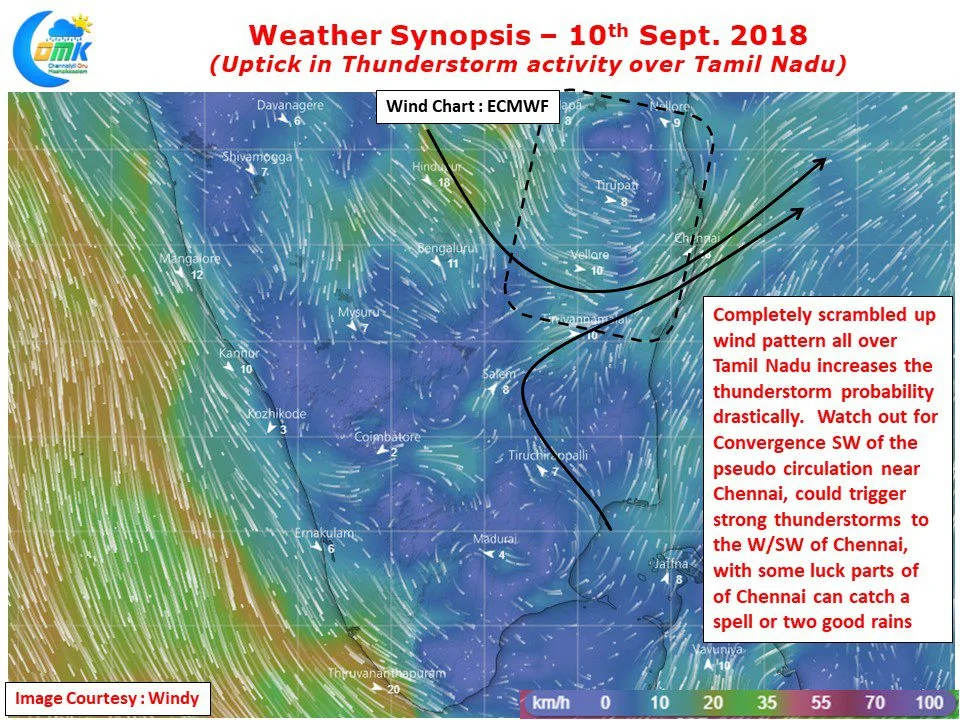Did you know 4 out of the last 5 El Nino Years has seen only one Organized Tropical Disturbance (Depression / Cyclone / Severe Cyclone) develop in Bay of Bengal during the entire Northeast Monsoon season. 2004 & 2006 saw only one depression develop in Bay of Bengal while 1997 and 2009 saw one cyclone develop during the Northeast Monsoon season. Read on for more such interesting tidbits on the Cyclone Season of North Indian Ocean. We would like to place on record our sincere thanks to IMD – Chennai for creating the Cyclone E Atlas without which this study would not have been possible.
In an interesting find it appears Bay of Bengal is slowing down in terms of cyclonic activity during the Northeast Monsoon. This pattern becomes very obvious during El Nino years. On an average Bay of Bengal saw 4.2 Tropical Disturbances (Depressions, Cyclones & Severe Cyclones) during the Northeast Monsoon between 1958 to 1980. Post 1980 the average number of disturbances during the Northeast Monsoon has come down to 3.1 Tropical Disturbances. The table below illustrates the difference in terms of cyclonic activity between the two periods.
Is there a connection between the ENSO / IOD status and the cyclonic activity of the Bay. The year 1966 which saw devolving Positive IOD just around NEM Onset is the year with highest amount of organized disturbances in Bay of Bengal, 7 disturbances in Bay and 8 disturbances in all during the NEM Season. Surprisingly 3 out of 5 years which saw the highest number of Tropical Disturbances in the Bay has seen Positive IOD influence. Interestingly except for 1985 all the other years are from before 1980.
In what could be an indication of things to come the years with the lowest amount of disturbances, all of these years had only one disturbance in Bay of Bengal for the entire season, except for one year 1961 all the other years have been after 1981 clearly indicating the potentially drying Bay of Bengal as far as Cyclonic Activity is concerned.

In another very interesting pattern that is showing up the 3 El Nino years with Positive IOD coupled, 1997, 2006 & 2009 that saw only 1 disturbance have all seen successful Northeast Monsoon across Coastal AP, TN & Chennai. Compare this with 2002 the only El Nino Year in recent times to have seen more than 1 organized disturbance saw below average rainfall across all the three regions.
Is there a relationship between the number of Tropical Disturbances in a year and the rainfall pattern for the year. The data which we have gone through does not clearly indicate a potential relationship except in two associations. 3 out of the Rainiest NEMs’ for Tamil Nadu has been when there was only one bay disturbance during the season. Similarly as far as Coastal AP is concerned the 5 driest NEM’s have seen a minimum of 4 Bay disturbance for the season possibly indicating a potentially inverse relationship between the rainfall pattern and number of organized disturbances during Northeast Monsoon.

We end up this study trying to understand if there is any role played by ENSO / IOD in the Genesis and Landfall of Cyclones in Bay of Bengal. In this chart we have ignored Depressions and taken only Cyclone & Severe Cyclones for the study.
Irrespective of the ENSO / IOD South Bay creates the most number of cyclones in Bay of Bengal while North Bay has the highest amount of landfalls in Bay of Bengal during Monsoon season. But there are a couple of pointers which are showing up. Positive IOD & El Nino conditions provide the highest probability for Cyclo Genesis in South Bay and similarly under Positive IOD & El Nino conditions the probability of cyclones having landfall in North Bay is lesser compared to Negative IOD & La Nina
A collection of the cyclone tracks from the years with highest number of Tropical Disturbances

A collection of the years with the least number of Tropical Disturbances





